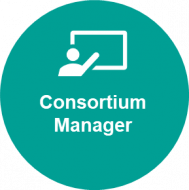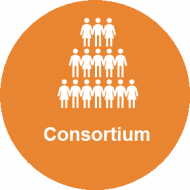Understanding DoD
Other Transactions and Other Transaction Consortia
First, let us dispel some confusion surrounding Other Transactions:
OTs are agreements that are not subject to FAR and DFARS requirements (click here for more information on OTs). This means FAR/DFARS mandated statutes and regulations, such as Cost Accounting System (CAS) compliance and intellectual property rights limitations are not applicable, and the DoD is afforded flexibility to negotiate terms and conditions that are more in line with commercial business practices.
Agencies must have congressional authority to execute Other Transactions (list of federal agencies with OT authority here). DoD has had OT authority since 1994. In fact, the DoD now has 2 types of Other Transaction Authority:
The Prototype OT authority (provided by Congressional authorization in 2016) enables the DoD to competitively award prototype OT agreements that can transition to sole source follow-on production awards.
OTs were originally intended to reduce barriers to entry for non-traditional defense contractors. Since 2016, OT use has been expanded to traditional contractors who satisfy certain conditions. (Traditional vs non-traditional contractor discussion here) DoD Use of OTs has increased significantly since 2016 when the 10 U.S.C. §2371b authority was added.
Other Transaction Authority (OTA) is not synonymous with the Middle Tier of Acquisition (MTA). OTs are a contracting strategy, while MTA is an acquisition strategy pathway of the Adaptive Acquisition Framework. OTs may be a complimentary contracting strategy for executing a rapid prototyping MTA program, but they are not interchangeable terms.
OT agreements can be awarded on their own or may be the resultant award of a competitive contracting process such as a Commercial Solutions Opening, Broad Agency Announcement, or Small Business Innovation Research (SBIR) program.
OT agreements can be issued through an OT Consortium on behalf of a DoD program, but they can also be issued directly by DoD programs using appropriately warranted Contracting Officers. Contracting Officers must have a separate Agreement Officer authority to award OT agreements.
Other Transaction Consortia
What is an Other Transaction (OT) Consortium?
An OT Consortium is a relationship between a government sponsor and a collection of traditional and non-traditional vendors, non-profit organizations, and academia aligned to a technology domain area (i.e., cyber, space, undersea, propulsion) that are managed by a single entity, and focused on innovative solutions to government technology challenges that meet the intended scope and purpose of other transactions.
OT Consortium Model
OT Consortia generally have three components, although some government sponsors opt to manage a consortium in-house rather than hire an industry Consortium Manager or Consortium Management Firm. The Consortium Manager is awarded an OT agreement by the government (base OT agreement) and manages OTs awarded to its consortium member organizations (project OT agreements) under the base agreement.


Consortium Sponsor (Government Sponsor and Contracting Office)
- Awards Other Transaction agreement to a Consortium Manager to execute administrative processes and workload (base OT agreement) for a specific technology domain area
- Establishes consortium objectives and overarching guidelines to execute the consortium
- Selects projects to be awarded to the consortium based on compatibility with consortium objectives and appropriateness of project for an OT award
- Approves evaluation selection criteria and project OT award selection/s
- Executes OT agreements for project awards
Consortium Manager (specifics will vary among consortia)
- Establishes processes for consortium application, membership terms, collects membership fees/dues*
- Executes consortium member agreements with each member organization
- Collects a percentage of fee for each project OT awarded under the base OT agreement*
- In collaboration with the government sponsor, supports government customers to: develop problem statements, requests for white papers, requests for prototype proposals (RFPPs), determine whether demos will be requested, develop phased selection processes, develop criteria to evaluate proposals, etc.
- Communicates requests for white papers/RFPPs to consortium members, usually via internal website or portal (some announcements may be public, but the details are usually available only to consortium members)
- Facilitates demos and other communication between consortium members and government customer; support demo evaluation and determinations to advance to next phase of selection process
- Manages proposal evaluations and project OT agreement award selection/s, negotiations, and cost analysis (gov sponsor ultimately approves)
- Manages post project OT agreement award administrative activities on behalf of government customer such as monitoring deliverables, invoice/payment tracking, and reporting (gov customer is responsible for day to day activities with contractor/s)
- Maintains “library” of proposals not selected/not funded for potential future use for current gov customer or new gov customer
*membership fees/dues and percentage of fee for award vary among consortia


The Consortium
- A consortium is established to support a specific technology domain area (i.e., cyber, space, undersea, propulsion)
- Consortium membership is open to all qualifying US entities:
- Traditional/non-traditional contractors
- Non-profit organizations
- Academic institutions
- Consortium members are subject to terms of membership, which may include an annual membership fee and a fixed-percentage fee applied to each project OT agreement awarded
- Qualifying entities may join one or multiple consortia
- Some consortia open to foreign entities
- Members have access to requests for white papers, RFPPS, etc from government customers specific to the consortium
- Some consortia managers may facilitate partnering opportunities among members
- Members may partner with other members to propose solutions
- Traditional contractors must be prepared to meet cost-sharing requirements of Other Transaction authorities
- Members may negotiate unique terms and conditions for individual projects
- Members that receive project OT awards will be assessed a percentage of fee by the consortium manager in accordance with consortium terms and conditions
Why Join a Consortium?
Enhances collaboration opportunities between government, industry, and academia in focused technology domain areas.
Enables open dialogue with government throughout process for highly tailored solutions and OT agreements that are usually awarded in much less time than many traditional FAR-based processes. Many OT consortia consistently make OT project awards in 90 days or less.
Focus on technology breakthroughs, exploration of the “art of the possible”, emerging technology trends, dual-use technology application, and commercialization of new technology.
Pros and Cons of Consortia
Pros
- A pool of vendors aligned to consortium focus area (i.e., cyber, space, undersea, propulsion) promotes an environment for collaboration with the government and with other consortium members.
- Consortia execute OT agreements that allow for a more collaborative process than traditional FAR processes that are bound by rigid source selection statutes and regulations.
- Consortia have established streamlined processes that quickly move through white papers, demos, proposals, evaluations, and selections and often execute awards more quickly than traditional government acquisition programs.
Cons
- Consortium membership does not guarantee an OT award!
- Non-traditional vendors, non-profit organizations, and academic organizations may be challenged by the financial considerations of consortia membership due to fees and percentage of award fees charged by consortia
- Some consortia are in high demand by government customers and are thereby resource constrained. This can due to volume of work for the consortium or by the availability of the assigned government contracting office. If the consortium is unable to take on new work, members may miss out on potential award opportunities.
- Many consortia do not award follow-on production activities. This means you may find yourself working with a new Contracting Officer in a program office with different opinions, methods, and speed of doing business than those supporting the consortium.
Sample organizations in each component of the OT Consortium Model
for illustrative purposes only | all organizations not represented

